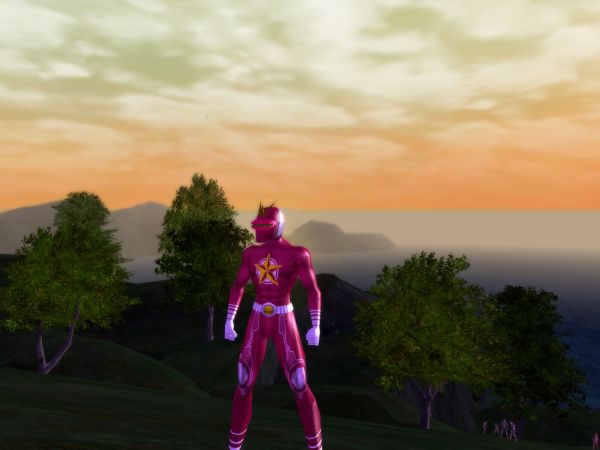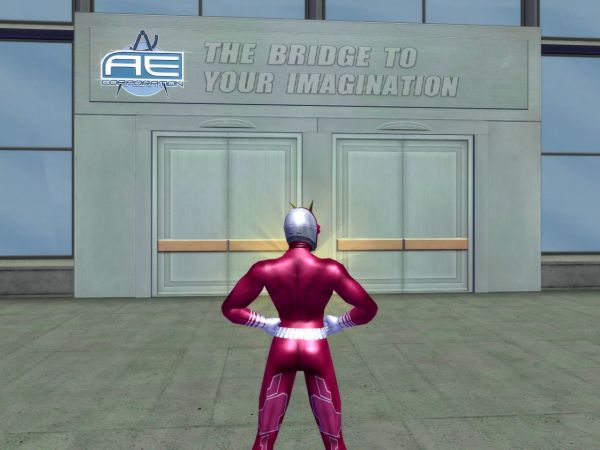
Serenity in City of Heroes. Â Crimson Star Fighter enjoys the beautiful wilderness landscape. Â (Never mind the group of shambling zombies at the foot of the hill behind him, and the Nazi werewolves you can’t see in front of him.)
Yesterday and today I played City of Heroes for some hours. Â This game is the hobby that has suffered the most from my adventures into brainwave entrainment this spring. Â Sims 2 has continued much like before, except that I have switched to a Sim neighborhood that requires less attention. Â CoH, however, has gotten very little me time, despite the awesome new free expansion I wrote about.
Perhaps the real reason is different: Â The peaceful everyday life of my Sims goes better with the serenity of meditation than the excitement, danger and violence simulated by the superhero game. As I grow older, it is natural to wonder why setting bullies on fire remains one of my greatest joys.
In any case, I have spent some hours in CoH again. Â My return to the game was partly caused by reading that the prices of invention salvage were ridiculously high. Â People have been leveling so quickly in the new Architect missions, they were desperate to get enhancements suitable for their higher level. Â I rushed to meet the increased demand with my supply, but the prices soon started to drop. Clearly others have thought the same way. I also saw (and was invited to) several teams doing classic missions (not user-made), so the death of the classic content is clearly exaggerated.
This is not to say that  AE (the Architect building) is not packed, especially in the most populated servers, especially in the evening and night American time, and especially in Atlas Park (the most popular newbie zone).  A good number of the people there are probably new players drawn in by the new feature, or people who have been away from the game for a while.  The broadcast channel is full of people looking for AE teams at those times and places, mostly farm teams but some specifically non-farm.  By farming we don’t mean raising livestock and pulling weeds, but rather doing missions repeatedly for profit (experience points, influence and tickets) rather than for their story content.  This is a long-standing practice in all massive online roleplaying games, but has become even more profitable with some of the user-made missions.
One nice little feature of the new AE mission system was one I discovered by accident when my game crashed. (I was lazy and tried to play with Vista. Â Needless to say I rebooted to Linux after the first and only crash of the night.) I was feeling pretty bad about the crash because I had failed to memorize or write down the name of my team leader so I could call him in-game when I reconnected. Â But to my delight, I came back into the game and was still a member of the team! Â This also happens in task forces, long rows of missions that are performed by a fixed team that may sometimes stay together for days, logging off and meeting again. Â But in task forces, you cannot invite new members once the chain of missions has started. Â In Architect missions you can. Â (Incidentally, this also makes it easier to kick parasites off the team, since you can replace them easily with more motivated players. I saw this in practice as well, although I was not the target of that.)

